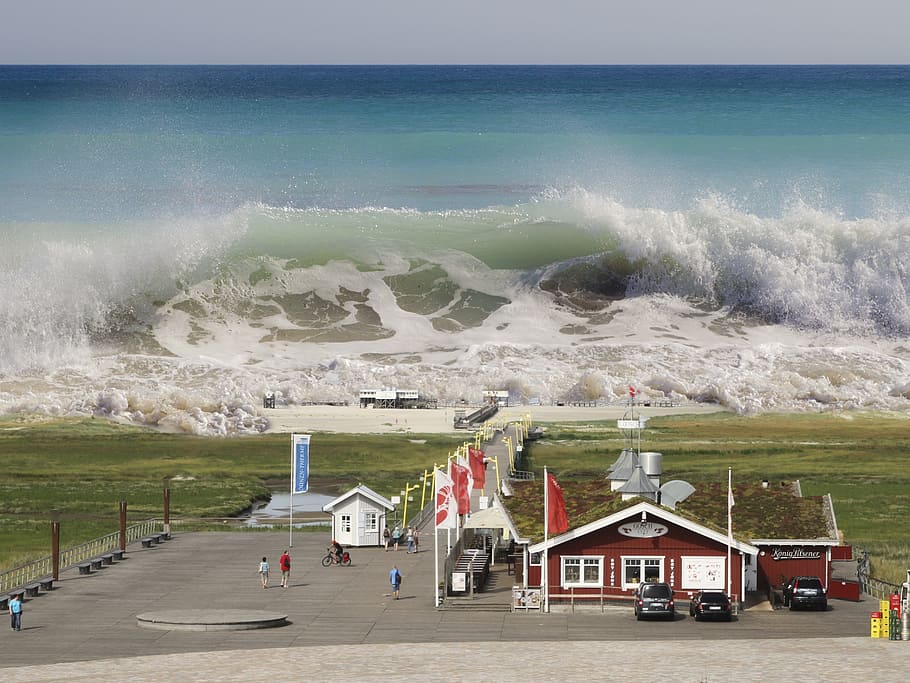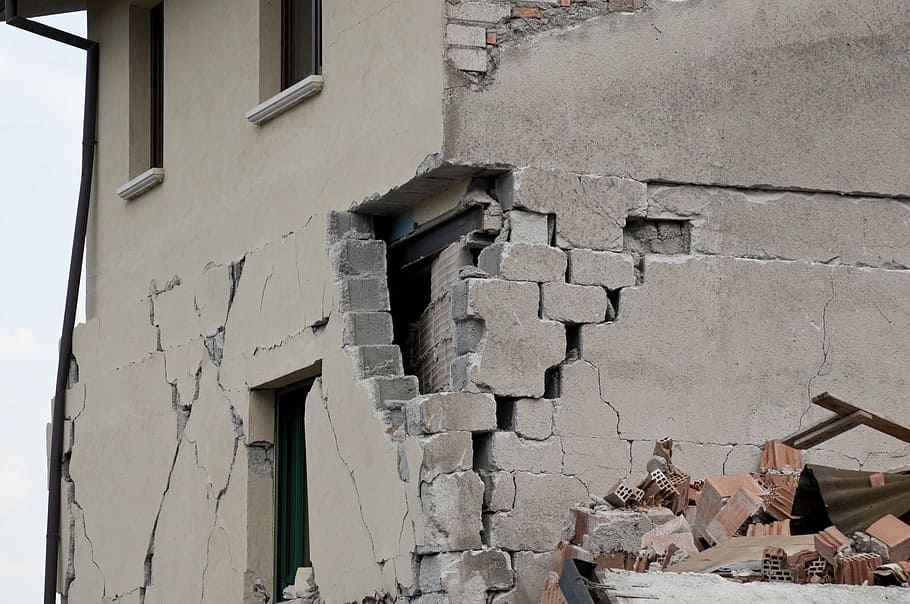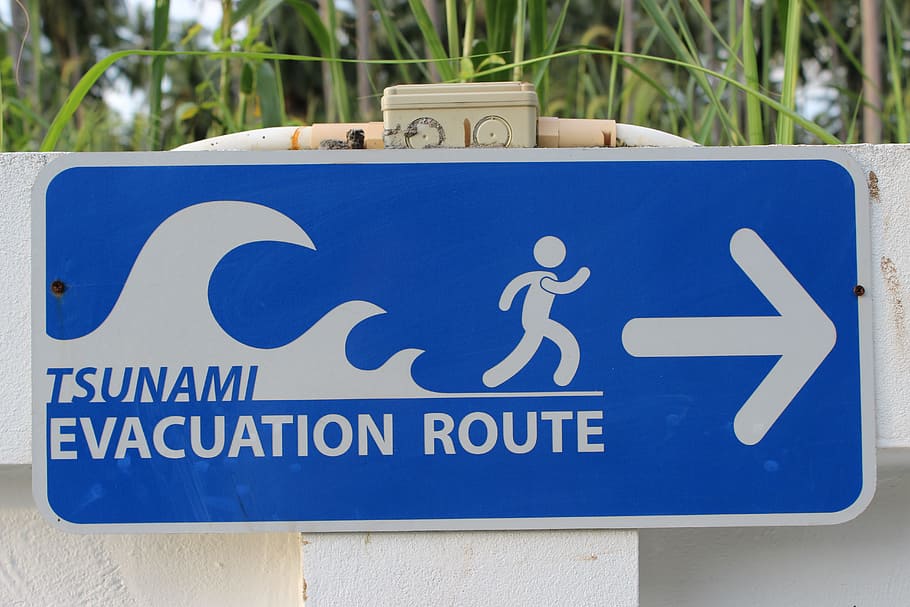設立・運営 2021.12.17
EM11 キャプティブの設立 No.11 (ケース・スタディ2:「小規模キャプティブ」による地震保険コスト大幅削減の実例)
当コラム内の文章・画像等の無断転載・引用・複製を固く禁じます。
For those who prefer to read this column in English, the Japanese text is followed by a British English translation, so please scroll down to the bottom of the Japanese text.
日本企業が所有するキャプティブ(自社専用保険会社)には、世界で事業展開をしている日本を代表する大企業が所有する、「規模が大きなキャプティブ」が多い。しかし、地震保険の付保対象となる財物および売上総利益の保険価額(=物件毎に設定される、保険事故の際に保険会社が支払うことができる保険金額の最高限度額)の合計が200億円以下、元受保険料水準が1億円台のキャプティブ・プログラムでも、キャプティブを持たない場合の地震保険と比べて保険料コストを大幅に削減できた実例がある。
「日本国内の沿岸部を中心に複数カ所の本社、工場、倉庫を有し製造業を営む「B社」が、米国ハワイ州に設立したキャプティブを活用した保険プログラムによって、地震保険コストを大幅に削減したグローバル・リンクの実例」を本コラムで紹介したい。

1.キャプティブ・プログラム導入の経緯
2011年3月11日の東日本大震災をきっかけにして、B社では大半の生産手段が「津波リスク」に晒されていることに危機意識が高まり、トップの指示のもと対処方法を広く調査、検討したところ、グローバル・リンクのホームページで「キャプティブ・プログラム」を見つけ、グローバル・リンクにアプローチした。
グローバル・リンクの説明を聞き納得したB社は、早速グローバル・リンクと「キャプティブの事業化調査に関わるコンサルティング契約(フェーズ1)」を締結した。そして、資産台帳をもとに火災保険の付保状況の調査をおこなったが、本来付保すべきものが付保されていなかったり、付保されている財物の保険金額が低すぎる例がみられた。さらに、工場、倉庫、施設がそれぞれ別々の保険証券で保険期間もバラバラに付保されていることも確認された。
グローバル・リンクは、「キャプティブ・プログラムの推進にも積極的な姿勢を見せるメガ損保D社と火災保険に付保すべき内容の再検討」をおこない、100を超え保険期間もバラバラであった火災保険証券を「企業財産包括保険」に一本化することをB社に提案した。このことによって、火災保険の補償範囲も広くなり、付保すべき財物の保険金額も適正化でき、保険期間を統一することができ、その結果、B社の保険管理業務は効率化されリスク管理の徹底も容易になり、更には補償を拡大したにもかかわらず火災保険料を30%削減できるからであった。
B社は、津波等の震災による財物損壊と遺失利益に対する補償として、「総支払限度額10億円」の地震補償の確保を希望した。グローバル・リンクは、業務提携先である、大手総合商社丸紅傘下の保険ブローカー(保険仲立人)「マルニックス」に、ロンドン・マーケットへのアプローチを依頼、世界最大級の再保険会社から、同額を総支払限度額とする地震補償を、日本の地震保険料に比して極めて低廉な保険料で引受けられるとの内諾を得ることができた。
この条件を携えてグローバル・リンクは、メガ損保D社へ「再保険引受の内諾取り付け(=再保険キャパシティの確保)」とB社の「キャプティブ・プログラム構想」を説明、D社との合意のもと「B社のキャプティブ設立」に向けて進んでいくこととなった。
グローバル・リンクは、これらの内容を具にB社に報告、キャプティブ・プログラム推進のための3条件である「①キャプティブからの再保険(再々保険)の引受手の確保、②キャプティブ設立地での設立可能性の確認、③元受保険会社の協力の確保」受けて、B社ではキャプティブ設立を正式に決定した。
B社とグローバル・リンクは、キャプティブ設立に関わるコンサルティング契約(フェーズ2)を締結、米国ハワイ州のキャプティブマネジメント会社と連携して、2ヶ月後には、ハワイ州保険局からキャプティブの営業認可を取得、米国ハワイ州にキャプティブを設立することができた。キャプティブ設立後、B社のキャプティブとグローバル・リンクで「キャプティブの維持管理に関わるコンサルティング契約(フェーズ3)」が締結され、「元受保険契約の保険開始=キャプティブによる再保険引受の開始」によって、キャプティブの営業が開始されたのである。

2.キャプティブのキャッシュフロー収支
グローバル・リンクは、「キャプティブの収益を高める=キャプティブの収入を増やす」ため、「日本で地震保険を「元受保険会社」として引受けるメガ損保B社から、キャプティブが引受ける再保険リスクをできるだけ多くする」ようにメガ損保B社と交渉していった。「キャプティブが引受けるリスクをできるだけ多くする」ということは、メガ損保B社が、再保険会社となるキャプティブに対して「(元受保険に対する)再保険の割合」、これを「出再率(出再割合)」と呼ぶが、この出再率をできるだけ高くすることを意味している。
何度かの交渉の結果、「出再率(出再割合)」は「95%」となり、再保険に出す元受保険会社の手数料、「再保険手数料」は、「再保険料に対して10%」と決まり、この条件でメガ損保B社が弾き出した、補償金額10億円に対する地震保険料の見積金額は1億6,000万円となった。
この結果、元受保険料(1億6000万円)の95%から再保険手数料(=出再部分について元受保険会社が事業費に充てる部分としてキャプティブが元受保険会社に支払うもの)を控除した1億4000万円がキャプティブの「保険料収入」になった。キャプティブの収入には「保険料収入」の他に「得た再保険料をもとにした投資収入」があるが、B社キャプティブは定期預金に余資を預け入れて、400万円の「投資収入」を得ることもできた。
一方、キャプティブの支出は、キャプティブがロンドンの再保険会社に支払う再保険料(親会社であるB社からみると再々保険料)、キャプティブ運営費用、税金等があるが、6000万円であった。キャプティブの収入からこの支出を差し引いたキャッシュフロー収支は+8000万円となり、キャプティブに8000万円が蓄積されることになったのである。
親会社であるB社については、元受保険料支払額(1億6000万円)から保険料損金算入による税効果(30%)を差し引き、その他コストの支払分を加えた実質支払額、つまり親会社としてのキャッシュフロー収支は▲1億2000万円となった。
キャプティブと親会社のキャッシュフロー収支を合計すると、▲4000万円である。これは、親会社の地震保険料の実質コストが、キャプティブ・プログラムを活用することによって、4000万円になったこと指し示している。
3.キャプティブ導入による地震保険料コスト削減効果
つまり、B社の地震保険コストを「キャプティブを導入した場合」vs.「キャプティブを導入しなかった場合」で比較すると、キャプティブを導入することにより、B社グループ全体での地震保険料コストを実に65%も削減したことになるのである。

今回のまとめ
キャプティブの利益の多くは、親会社が日本の保険会社に支払う元受保険料とキャプティブが再保険会社に支払う再保険料との差額、いわゆる「保険料の内外価格差」からもたらされる。
地震保険の場合、付保対象となる建物の建築年・構造、所在地・分散状況等により、引受の補償上限や保険料等の引受条件を判断・決定する権限を有するアンダーライターのリスク判断が大きく異なってくるが、競争が激しい海外の再保険市場においては、保険会社(再保険会社)、そして担当引受人である「アンダーライター」によるリスク判断の差がかなり大きい。
B社キャプティブの場合、補償範囲を「財物損壊」に対する補償に加えて「遺失利益」の補償にも拡大したにもかかわらず、大変低廉な再保険料で再保険を確保できた。これは、グローバル・リンクが提携先の再保険ブローカーとともに、英国ロンドンの再保険会社のアンダーライターに対してリスク判断上必要な情報を率先してきめ細かく正確に提供したことにより、グローバル・リンクへの信頼が厚いアンダーライターが当案件の「引受リスクの透明性」を高く評価しているからである。再保険手配において、その知識・経験はもとより、アンダーライターとの信頼関係が鍵になるのである。
キャプティブは、保険監督当局から営業認可を受けたれっきとした保険会社である。一般の保険会社であれば、営業(保険募集)、保険の引受、保険金支払、契約管理、資産運用、会社管理等の部署を有する大組織になる。一方、キャプティブは、会社経営と保険募集を除く、運営・管理の全ての機能をキャプティブ所在地にある外部のキャプティブ向けのサービス・プロバイダーに業務を委託する。キャプティブが元受保険会社から引受ける再保険は、親会社と元受保険会社間で取り決めるため、親会社リスクの再保険のみを引受けるキャプティブには営業機能は不要であり、会社経営は親会社または現地子会社の役職員が就任する役員が担当するのが一般的である。
したがって、キャプティブの「保険会社経営の経費効率」は極めて高い。グローバル・リンクが推奨する米国ハワイ州では、監督当局(ハワイ州保険局)のキャプティブ担当部署がキャプティブ業を強力に支援しており、キャプティブ向けの現地サービス・プロバイダーの多く(キャプティブ・マネジャー、弁護士、会計士、銀行)がホノルル市中心部に集積し、日本語でコミュニケーションがとれることもあり、日本の親会社はキャプティブ経営に高い透明性を確保しながら、安心して経営できる。
地震保険のように、「保険事故の発生頻度は低いが、発生すると巨大損失になる保険リスク」の引受けにキャプティブは適している。出再対象となる親会社の元受保険料が1億円程度になる場合には、補償上限の引上げと補償範囲の拡大、そしてその実質コストの低減が期待でき、キャプティブに蓄積した資金は、監督当局の認可を受けることができれば、親会社に株主配当することができる、このような様々なメリットを有したキャプティブの設立を検討されることをお薦めしたい。
執筆者 : 菅原 伸雄 上田 修司 羽谷 信一郎
翻訳者:羽谷 信一郎
It is strictly forbidden to publish, copy, quote or distribute the contents of this column without permission.
English Translation
EM (Establishment ・Management) 11 – Establishment of the Captive No.11 (Case study 2:”Small-scale captive” Earthquake insurance cost reduction)
Many of the captives owned by Japanese companies (their own insurance companies) are large and owned by some of Japan’s largest companies with global operations. However, even captive programmes with an aggregate insurable value (i.e. the maximum amount that an insurer can pay in the event of an insured event) of less than 20 billion yen for the property and gross profit covered by earthquake insurance, and with primary premium levels in the 100 million yen range, can still be expected to be less expensive than earthquake insurance without a captive. In this column, we would like to share with you an example of a global link that “Company B”, a manufacturing company with multiple headquarters, plants and warehouses located mainly in coastal areas of Japan, was able to significantly reduce its earthquake insurance costs through a captive program established in Hawaii, USA.
1. Background to the introduction of the Captive Programme
Following the Great East Japan Earthquake of 11 March 2011, Company B became increasingly aware of the fact that most of its production equipment was exposed to “tsunami risk”. After extensive research and consideration of ways to deal with the situation under the direction of the top management, they found the “Captive Programme” on Global Link’s website and approached Global Link.
Company B immediately entered into a consulting agreement (Phase 1) with Global Link to investigate the feasibility of a captive. Based on the asset register, a fire insurance survey was carried out and it was found that some properties were not insured when they should have been, and that the amounts insured were too low. It was also found that factories, warehouses and facilities were insured under different policies and for different periods.
Global Link reviewed the contents of the fire insurance policy with D, a mega insurer that is also actively promoting a captive program. The fire insurance policies, which numbered more than 100 and had different terms of insurance, were consolidated into a single comprehensive corporate property insurance policy. As a result, the scope of fire insurance coverage was broadened, the amount of property to be insured was optimized, and the term of insurance was standardized. As a result, Company B’s insurance administration became more efficient, risk management became easier, and fire insurance premiums were reduced by 30% despite the expanded coverage.
Company B wanted to secure earthquake coverage with a “total limit of ¥1 billion” to cover property damage and lost earnings in the event of a tsunami or other disaster. Global Link contacted Marnix, an insurance broker affiliated with Marubeni Corporation, one of the world’s largest reinsurers in the London market. We were able to obtain the informal consent of one of the world’s largest reinsurers to underwrite the same amount of earthquake coverage at a very low premium compared to Japanese earthquake insurance premiums.
With these conditions in hand, Global Link explained to Mega P&C Insurance Company D that it would secure an informal consent for reinsurance underwriting (i.e., secure reinsurance capacity) and the concept of Company B’s captive program, and agreed to proceed with the establishment of Company B’s captive.
Global Link reported to Company B on the details of the captive program, which was based on the following three conditions: (1) securing reinsurers from the captive, (2) confirming the feasibility of establishing a captive in the captive’s location, and (3) securing the cooperation of the primary insurer. Company B decided to formally establish a captive.
Company B and Global Link entered into a consulting agreement for the establishment of a captive (Phase 2), and in cooperation with a captive management company in Hawaii, Company B was able to obtain approval from the Hawaii Department of Insurance to establish a captive in Hawaii two months later. After the establishment of the captive, the captive and Global Link entered into a consulting agreement for the maintenance and management of the captive (Phase 3), and the captive commenced operations by “commencing insurance of the primary insurance contract = commencing reinsurance underwriting by the captive”.
2. Captive’s cash flow balance
In order to “increase the captive’s income”, Global Link negotiated with Mega-P&C Insurance Company B to “increase the amount of reinsurance risk that the captive assumes from Mega-P&C Insurance Company B”, which underwrites earthquake insurance in Japan as a “primary insurer”. This meant that Mega P&C B, as the reinsurer, had to increase the ceding ratio (the ratio of reinsurance from primary insurance) to the captive.
As a result of several rounds of negotiations, the ceding ratio was set at 95%, and the reinsurance commission for the primary insurer was set at 10% of the reinsurance premium.
As a result, the captive’s “premium income” amounted to ¥140 million, which was 95% of the original premium (¥160 million) minus the reinsurance commission (i.e., the portion of the ceded portion that the captive pays to the original insurer to cover its operating expenses). In addition to “premium income”, the captive’s income includes “investment income from reinsurance premiums earned”, and the Company B captive was also able to earn ¥4 million in “investment income” by depositing surplus funds in time deposits.
On the other hand, the captive’s expenditure, which included reinsurance premiums paid by the captive to a London reinsurance company (reinsurance premiums from the point of view of the parent company, Company B), captive operating expenses and taxes, was ¥60 million. Subtracting this expenditure from the captive’s income, the cash flow balance would have been +80 million yen, resulting in an accumulation of 80 million yen in the captive.
For the parent company, Company B, the actual payment of premiums (160 million yen) minus the tax effect of deducting premiums (30%) and adding other costs (-120 million yen) resulted in a cash flow loss for the parent company.
The total cash flow balance for the captive and the parent company is – 40 million yen. This indicates that the real cost of earthquake insurance premiums for the parent company has been reduced to 40 million yen by the use of the captive programme.
3. Reduction of earthquake insurance premium cost by introduction of captive
A comparison of the cost of earthquake insurance for Company B with and without the captive shows that the introduction of the captive has reduced the cost of earthquake insurance for the entire Company B group by 65%.
Summary of this issue
Most of the captive’s profits come from the difference between the primary premiums paid by the parent company to the Japanese insurance company and the reinsurance premiums paid by the captive to the reinsurance company, the so-called “premium differential between domestic and foreign prices”.
In the case of earthquake insurance, the underwriter, who has the authority to determine the underwriting conditions, such as the coverage limit and premiums, differs greatly depending on the year and structure of the building to be insured, its location and dispersion, etc. In the highly competitive overseas reinsurance market, there is a considerable difference in the risk judgment of the insurance company (reinsurance company) and the “underwriter” who is the underwriter in charge.
In the case of Company B’s captive, the company was able to secure reinsurance at very low premiums despite expanding its coverage to include “lost profits” in addition to “property damage” coverage. This was possible because Global Link, together with its reinsurance brokers, took the initiative in providing detailed and accurate information to the underwriters of the London reinsurance company, and the underwriters, who had a high degree of trust in Global Link, appreciated the “transparency of the underwriting risk” of the case. The underwriters, who have a high level of trust in Global Link, have praised the “transparency of underwriting risk” of the deal. As well as knowledge and experience, trust in underwriters is key to reinsurance arrangements.
Captives are fully licensed to operate by the insurance regulator. A typical insurance company is a large organisation with departments for sales (insurance solicitation), underwriting, claims payment, policy administration, asset management and company administration. A captive, on the other hand, outsources all of its operational and administrative functions, with the exception of company management and policy administration, to an external service provider for the captive in the captive’s location. The reinsurance that the captive takes from the primary insurer is agreed between the parent company and the primary insurer, so a captive that only takes on reinsurance of the parent company’s risks does not need to perform sales functions and is generally managed by a director who is an employee of the parent company or a local subsidiary.
As a result, captives are very cost efficient. In the State of Hawaii, where Global Link recommends captives, the Hawaii State Department of Insurance is a strong supporter of captives, and many of the local service providers for captives (captive managers, lawyers, accountants, banks) are located in central Honolulu. Many of the local service providers for captives (captive managers, attorneys, accountants, banks) are concentrated in central Honolulu and can communicate in Japanese, allowing the Japanese parent company to operate with a high degree of transparency and peace of mind.
Captives are well suited to underwrite “insurable risks that occur infrequently but can be catastrophic”, such as earthquake insurance. If the ceding parent company’s premiums are in the region of 100 million yen, it is possible to increase the coverage limit, expand the scope of coverage and reduce the real cost of such coverage, and, subject to regulatory approval, to distribute the accumulated funds to the parent company. With these advantages, it is recommended to consider establishing a captive.
Author:Nobuo Sugawara Syuji Ueda Shinichiro Hatani
translator: Shinichiro Hatani

